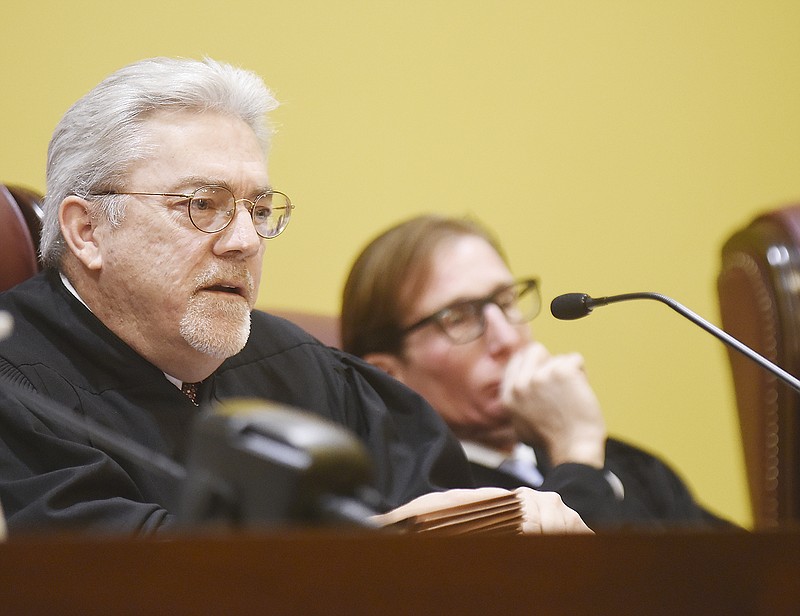In a written brief, St. Louis attorney Matt Vianello urged the Missouri Supreme Court to find "Governor (Mike) Parson was not authorized to appoint Mike Kehoe - or anyone else - as lieutenant governor of the state of Missouri."
Wednesday morning, the seven-member high court heard oral arguments in the case challenging the governor's authority to fill a vacancy in the lieutenant governor's office.
"Since 1879, the General Assembly has excluded the office of the lieutenant governor from those offices the governor can fill through appointment," Vianello told the court. "This is for good reason - under the Constitution, if the governor vacates his office, the order of succession is a democratically elected lieutenant governor, the Senate president pro tem and the speaker of the House, both of whom are selected by the people's representatives.
"If, however, the governor gets to appoint a lieutenant governor, the governor's potential successor is no longer the people's choice to succeed to that office - it's one person's choice."
The Missouri Democratic Party and World War II veteran Darrell Cope, Hartville, filed the lawsuit on June 18 - the same day Parson tabbed then-state Sen. Kehoe, R-Jefferson City, to fill the vacancy created June 1, when Parson became governor following then-Gov. Eric Greitens' resignation.
Cole County Circuit Judge Jon Beetem ruled in July that the "plain language" of the Missouri Constitution gives the governor the authority to make an appointment - and that the lawsuit's request to void the appointment was, in fact, an effort to remove a state office-holder without following either the required impeachment process or an ouster suit that can be launched only by the attorney general or the local prosecutor.
D. John Sauer - Attorney General Josh Hawley's first assistant and solicitor - repeated that finding Wednesday as he argued the Missouri Constitution clearly gives the governor the authority that Vianello's lawsuit says he doesn't have.
In Article IV/Section 4, the Constitution says: "The governor shall fill all vacancies in public offices unless otherwise provided by law, and his appointees shall serve until their successors are duly elected or appointed and qualified."
Sauer said that's all the authority the governor needs, because state law doesn't provide any directions on appointing a lieutenant governor.
However, Vianello argued, the law in Section 105.030 makes it clear the governor doesn't have the power to name a lieutenant governor.
That law says: "Whenever any vacancy occurs or exists in any state or county office originally filled by election of the people, other than in the offices of lieutenant governor, state senator or representative, sheriff, or recorder of deeds in the city of St. Louis, the vacancy shall be filled by appointment by the governor."
Vianello said the exemption for the lieutenant governor's appointment is clear, or it wouldn't be in the list of jobs the governor can't fill.
However, Sauer countered, a process for filling a vacancy in those other positions is spelled out in other sections of law - and there's no other section that gives specific instructions for the lieutenant governor's office, so the authority goes back to the Constitutional language that the governor has the power "unless otherwise provided by law."
Sauer argued Wednesday: "The Legislature must speak very clearly if it wants to displace a core executive power.
"The power to fill executive offices is a core incident of executive power, that's vested in the governor by Article IV/Section 4."
The state also argued, and Beetem last summer agreed, that once someone holds a statewide office, they can be removed only by impeachment.
The Supreme Court judges also spent some time Wednesday raising procedural questions about whether Cope and the Democratic Party had the legal standing to bring the lawsuit, and about the kind of lawsuit that was filed.
As usual, the court gave no indication when it would issue its ruling.

